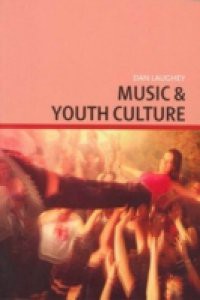Music and Youth Culture offers a groundbreaking account of how music interacts with young people's everyday lives. Drawing on interviews with and observations of youth groups together with archival research, it explores young people's enactment of music tastes and performances, and how these are articulated through narratives and literacies. An extensive review of the field reveals an unhealthy emphasis on committed, fanatical, spectacular youth music cultures such as rock or punk. On the contrary, this book argues that ideas about youth subcultures and club cultures no longer apply to today's young generation. Rather, archival findings show that the music and dance cultures of youth in 1930s and 1940s Britain share more in common with youth today than the countercultures and subcultures of the 1960s and 1970s. By focusing on the relationship between music and social interactions, the book addresses questions that are scarcely considered by studies stuck in the youth cultural worlds of subcultures, club cultures and post-subcultures: What are the main influences on young people's music tastes? How do young people use music to express identities and emotions? To what extent can today's youth and their music seem radical and progressive? And how is the 'special relationship' between music and youth culture played out in everyday leisure, education and work places?

